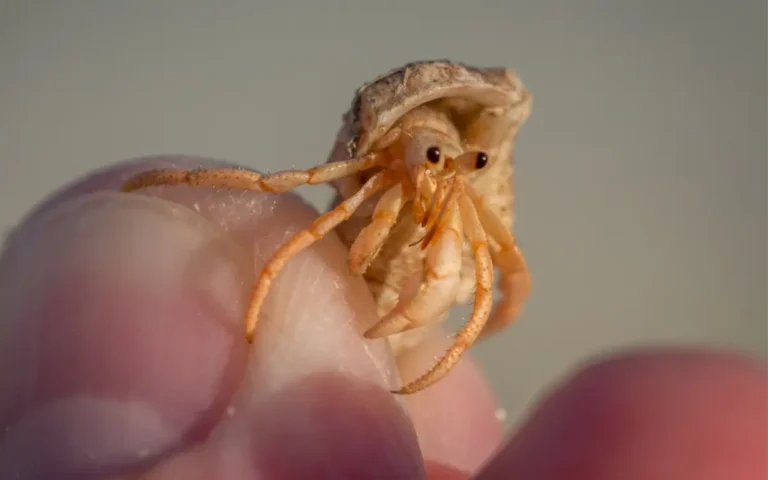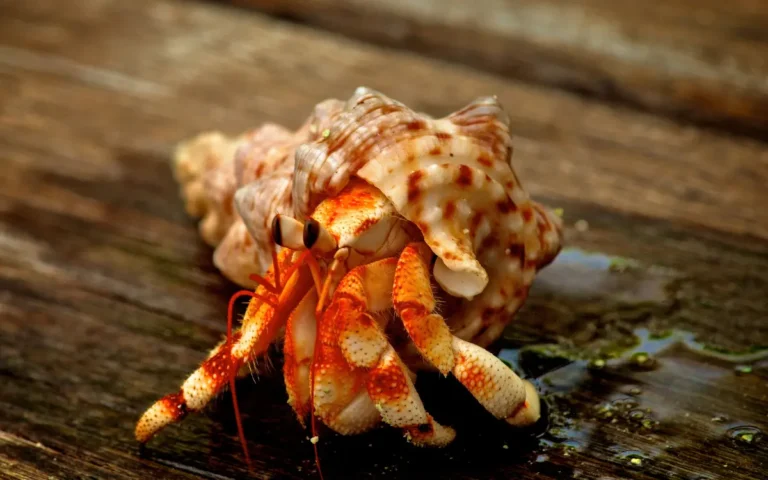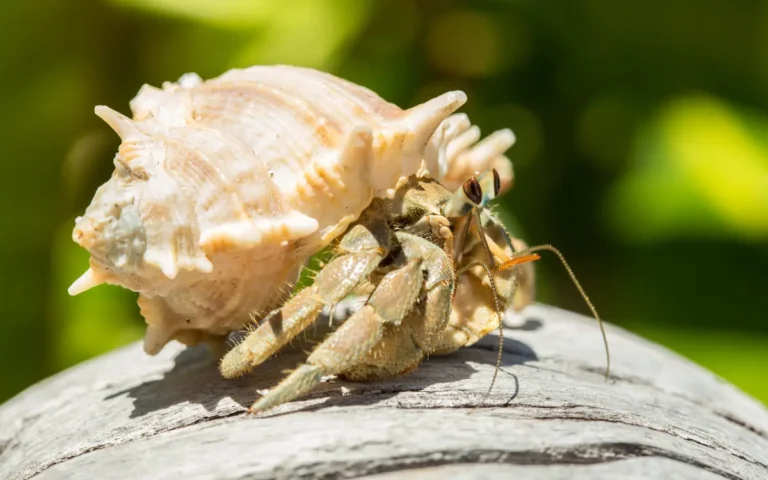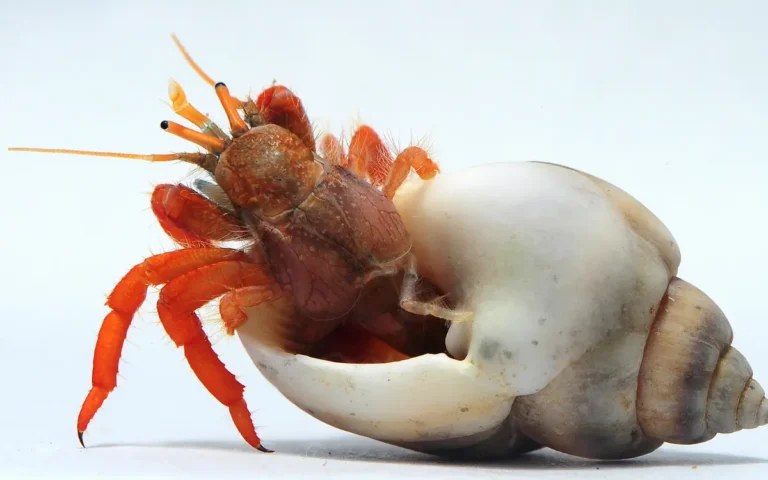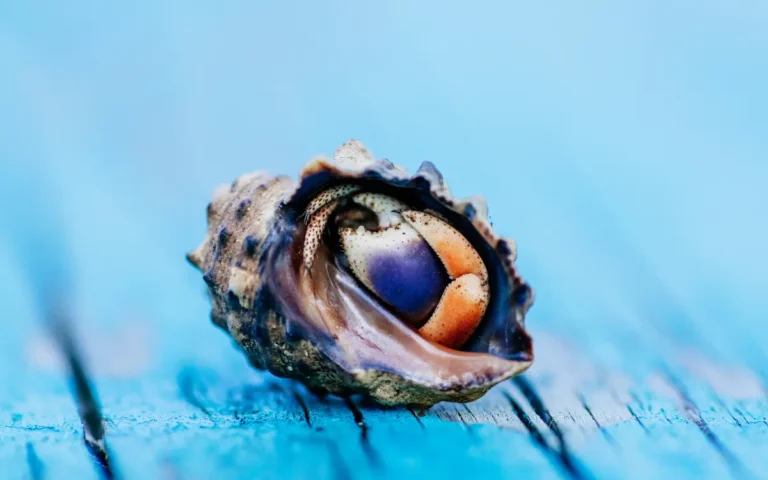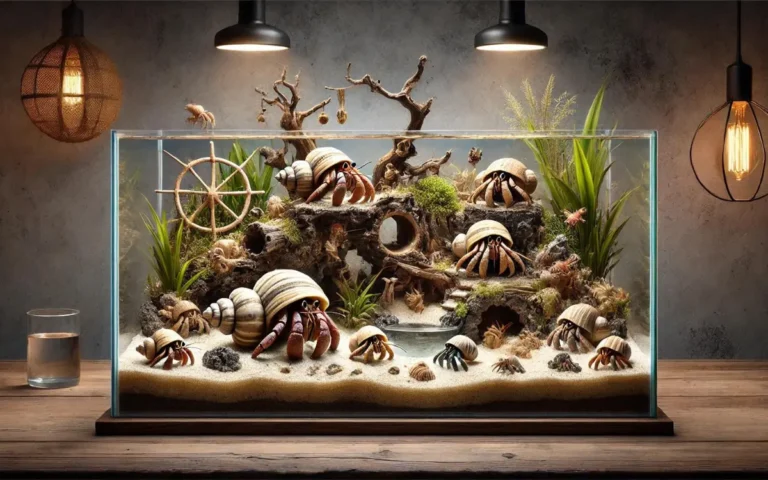17 Fun Facts About Hermit Crabs That Will Amaze You
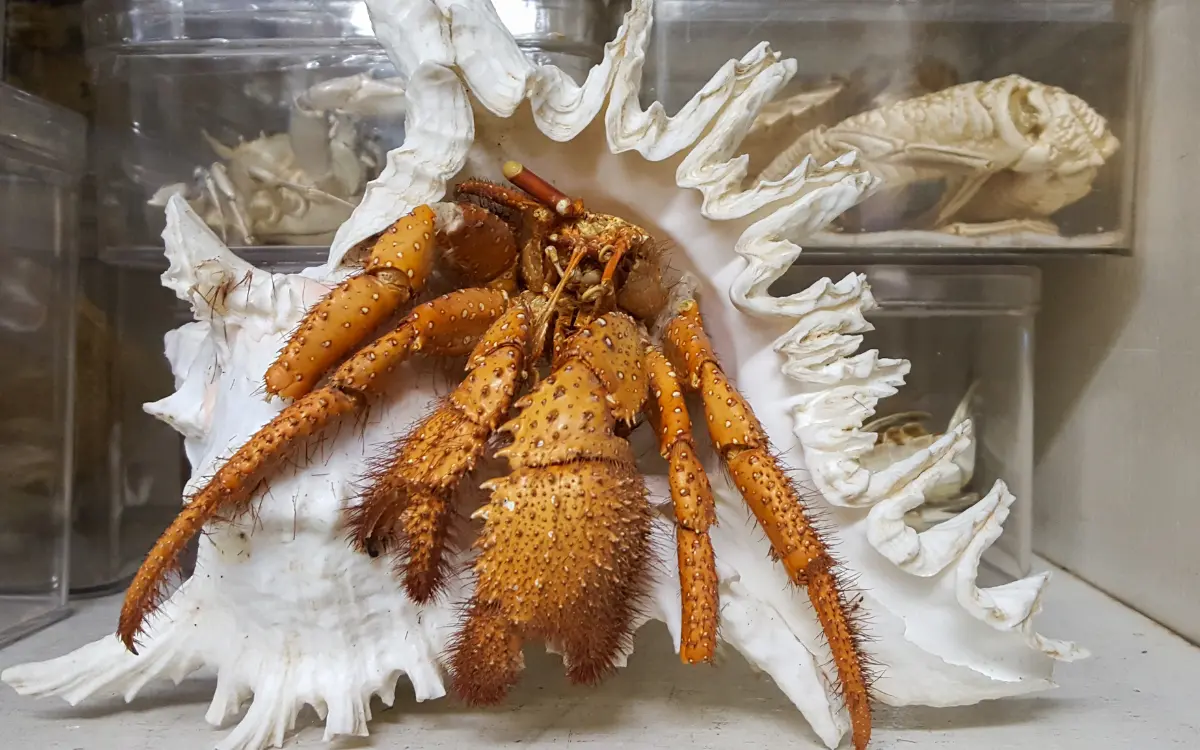
Hermit crabs are small crustaceans known for their unique habit of living in empty shells. Unlike other crabs, they have soft, vulnerable abdomens, so they protect themselves by occupying discarded shells, usually from snails.
There are different type of hermit crabs can be found in both marine and terrestrial environments, depending on the species.
Quick Facts About Hermit Crabs
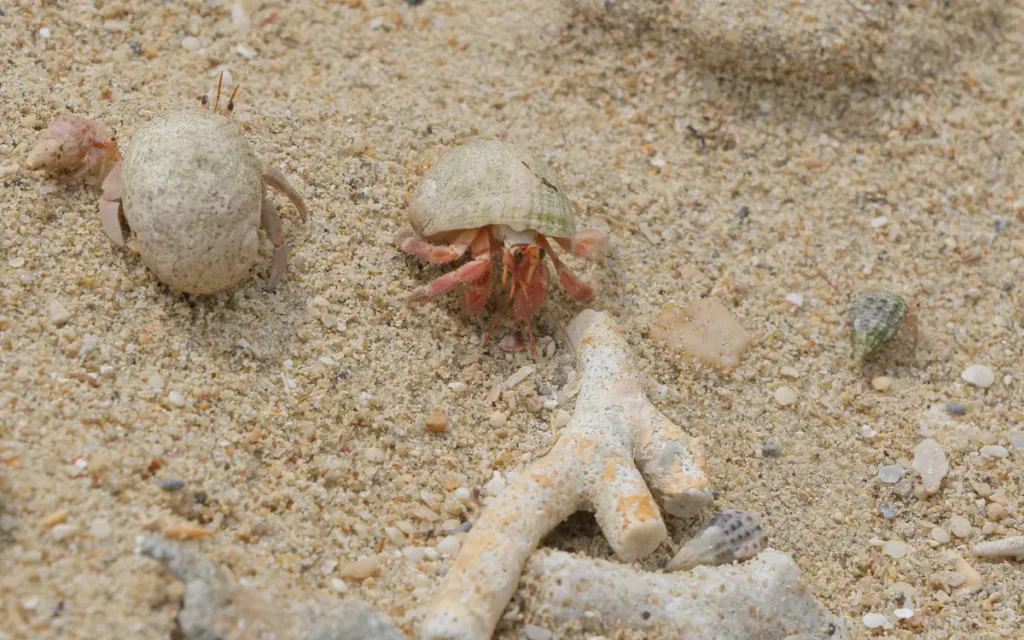
| Fact | Description |
| Lifespan | Up to 20 years in captivity |
| Diet | Omnivores – eat plants, dead animals, and fruits |
| Habitat | Both marine and terrestrial |
| Size | Varies from 0.5 inches to 11 inches |
| Social Behavior | Often live in colonies |
17 Fun Facts About Hermit Crabs
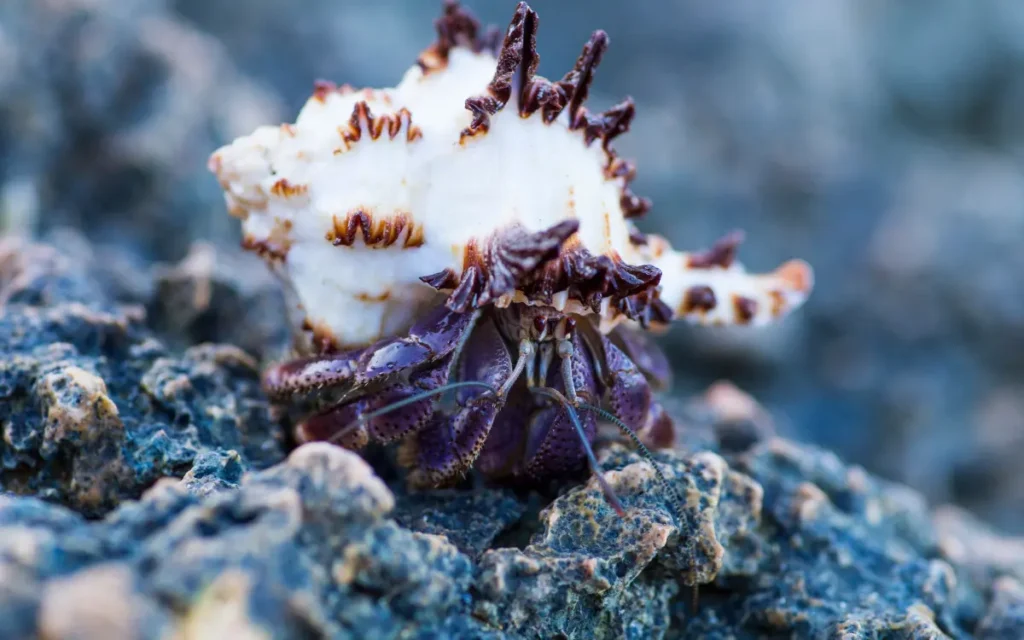
1. Unique Shell Habit
Hermit crabs use empty shells for protection because their soft abdomens are vulnerable to predators. They choose shells that fit snugly, offering the best protection while allowing room for growth. The selection process is critical, as the right shell can enhance their survival and mobility.
2. Social Creatures
Hermit crabs are social animals that often live in groups. They interact with each other through touch and antennae movements. In the wild, they can be seen forming “vacancy chains,” where a line of crabs waits to move into a newly available, larger shell.
3. Long Lifespan
Hermit crabs can live surprisingly long lives. In captivity, with proper care, they can live up to 30 years, while in the wild, their lifespan is generally shorter due to predators and environmental factors.
4. Varied Diet
Hermit crabs are omnivores and scavengers. They eat a variety of foods, including fruits, vegetables, dead animals, and even their own molted exoskeletons. This varied diet helps them obtain all the necessary nutrients for their health.
5. Land and Sea
Hermit crabs can be found in both marine and terrestrial habitats. Marine hermit crabs live in oceans, particularly in shallow coastal areas, while terrestrial hermit crabs inhabit tropical regions and need both land and water to thrive.
6. Changing Shells
As hermit crabs grow, they need to find larger shells. This process can involve “shell fights,” where crabs compete for the best available shells. A good fit is essential for protection and mobility.
7. Nocturnal Nature
Hermit crabs are nocturnal, meaning they are most active at night. This behavior helps them avoid predators and extreme daytime temperatures, making night-time the best foraging time.
8. Communication
Hermit crabs communicate through a combination of vibrations, sounds, and antennae movements. These methods help them convey messages about food, danger, or shell availability.
9. Regeneration
One of the most remarkable abilities of hermit crabs is their capacity to regenerate lost limbs. If they lose a leg or claw, it will gradually regrow during subsequent molts, ensuring they can continue to survive and function.
10. Molting Process
Molting is a vital process for hermit crabs, where they shed their old exoskeleton and grow a new one. This process allows them to grow and also regenerate lost limbs. During molting, crabs often bury themselves to stay protected.
11. Crab Communities
Hermit crabs often live in communities where they can share resources and protection. These groups can range from a few individuals to large colonies, providing safety in numbers.
12. Diverse Sizes
Hermit crabs vary greatly in size, from tiny species measuring less than an inch to larger ones that can reach up to 11 inches in length. This diversity allows them to occupy a wide range of ecological niches.
13. Interesting Eyes
Hermit crabs have compound eyes on stalks, giving them a wide field of vision. Their eyes are adapted to detect movement and navigate their environment effectively.
14. Sensitive Antennae
Antennae are crucial for hermit crabs, helping them navigate, find food, and communicate with other crabs. These sensory organs are highly sensitive to touch and chemical signals in their environment.
15. Clean-Up Crew
Hermit crabs play an essential role as scavengers in their ecosystems. By consuming dead plant and animal matter, they help recycle nutrients back into the ecosystem, maintaining a healthy balance.
16. Historical Significance
Hermit crabs have been significant in various cultures throughout history. They have been used in traditional medicine, as pets, and even in art and literature, symbolizing resourcefulness and adaptability.
17. Adapting to Captivity
Hermit crabs can adapt well to life in captivity if provided with the right environment. They need a habitat that mimics their natural conditions, including proper humidity, temperature, and access to both fresh and saltwater.
Specialty of Hermit Crabs
Shell Usage: One of the most distinctive features of hermit crabs is their use of empty shells for protection. Unlike other crabs, hermit crabs have soft, exposed abdomens that require a hard shell for safety. This unique behavior not only protects them from predators but also helps them retain moisture, which is vital for their survival.
Social Behavior: Hermit crabs are social creatures that often live in groups. This social structure is beneficial for shell exchange and protection. They engage in a behavior known as “vacancy chains,” where a group of crabs line up to move into a series of shells that fit them better as soon as a larger shell becomes available.
Molting Process: Hermit crabs undergo a molting process, where they shed their exoskeleton to grow. This process is crucial for their development and regeneration of lost limbs. During molting, they often burrow and hide to protect themselves from predators and other crabs.
Regeneration Ability: Hermit crabs can regenerate lost limbs over time. This ability is particularly useful for survival, as it allows them to recover from injuries that would otherwise be debilitating.
Adaptability: Hermit crabs can adapt to a wide range of environments, from tropical beaches to the deep sea. Their ability to find and use different types of shells allows them to thrive in various habitats.
Role in Marine and Terrestrial Ecosystems
Scavengers and Decomposers: Hermit crabs play a crucial role as scavengers in their ecosystems. They consume dead plants and animals, helping to break down and recycle organic matter. This scavenging activity aids in nutrient cycling and contributes to the cleanliness and health of their habitat.
Shell Recyclers: By using discarded shells, hermit crabs promote the recycling of these shells within the ecosystem. This behavior benefits other organisms that also rely on shells for protection and habitat, ensuring that resources are continually reused.
Indicators of Environmental Health: The presence and health of hermit crab populations can indicate the overall health of their environment. As they are sensitive to pollution and habitat changes, a thriving hermit crab population usually signifies a healthy ecosystem.
Soil Aeration: Terrestrial hermit crabs contribute to soil aeration through their burrowing activities. This helps to improve soil quality and promotes the growth of vegetation by enhancing nutrient and water infiltration.
Food Source: Hermit crabs serve as a food source for various predators, including birds, fish, and larger crabs. Their presence in the food chain supports the biodiversity and stability of their ecosystems.
Unique Characteristics and Ecological Roles
| Unique Characteristics | Ecological Roles |
| Shell Usage | Scavengers and Decomposers |
| Social Behavior | Shell Recyclers |
| Molting Process | Indicators of Environmental Health |
| Regeneration Ability | Soil Aeration (Terrestrial) |
| Adaptability | Food Source for Predators |
Fun Activities for Hermit Crabs
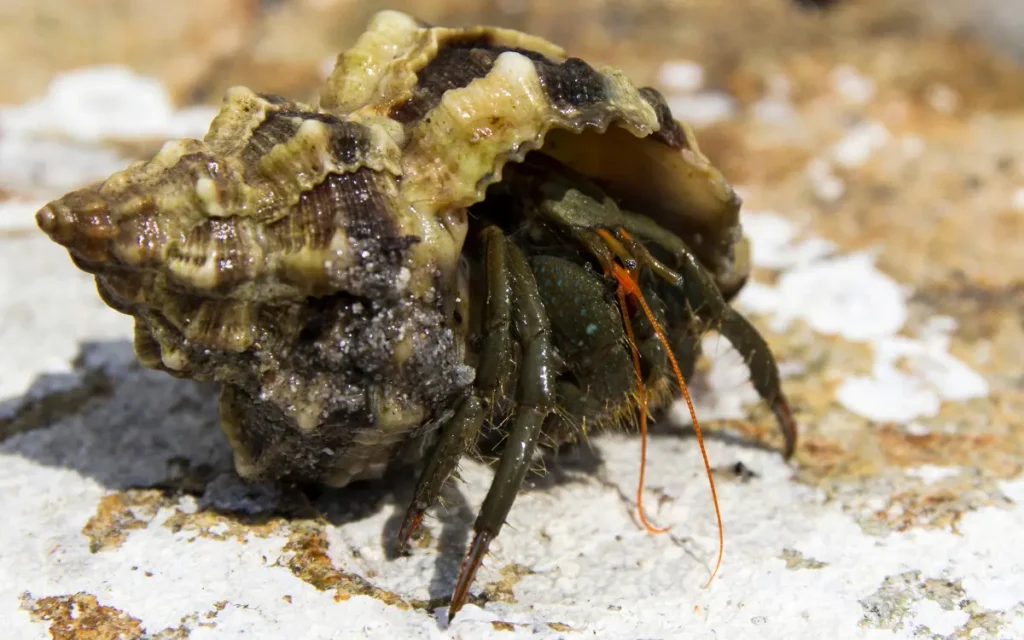
How Do Hermit Crabs Have Fun?
Hermit crabs are curious and active creatures that enjoy exploring their environment. In the wild, they engage in various activities that can be considered “fun” for them:
Exploring: Hermit crabs love to explore their surroundings. They climb over rocks, dig in the sand, and investigate new objects they come across.
Shell Exchange: Finding and moving into new shells is an exciting activity for hermit crabs. They often engage in shell selection and sometimes even form vacancy chains.
Social Interactions: Hermit crabs are social animals that enjoy interacting with each other. They communicate through touch and antennae movements, often seen in groups sharing shells and resources.
Read also: How To Take Care Of A Hermit Crab (Beginner Guides)
Consequences of Shell Loss and Importance of New Shell
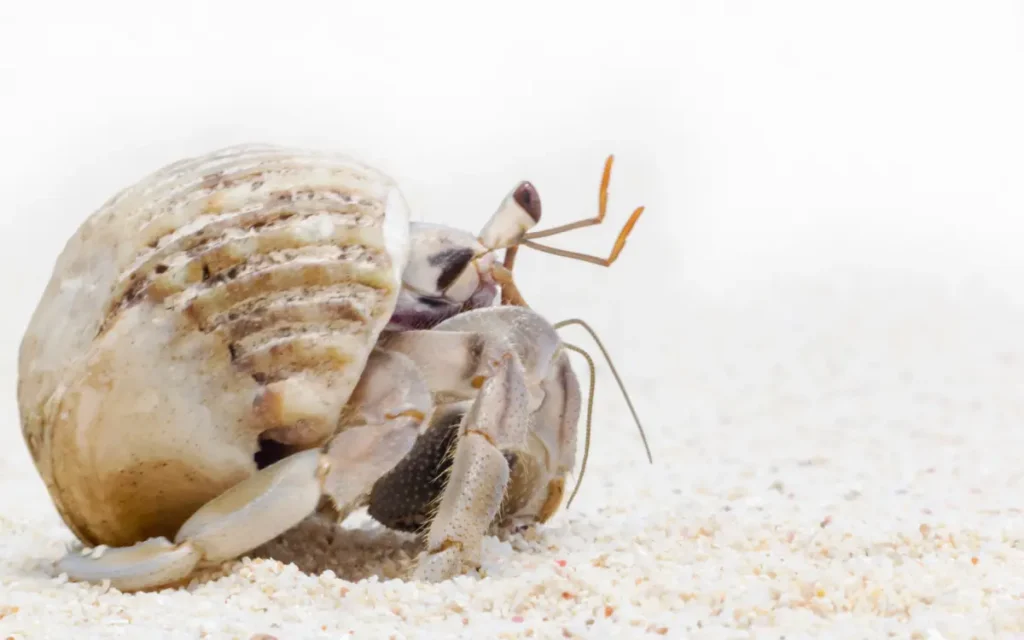
| Consequences of Shell Loss | Importance of New Shell |
| Vulnerability to predators | Provides immediate protection |
| Risk of desiccation | Helps retain necessary moisture |
| Increased risk of injury | Offers structural support |
| High stress levels | Reduces stress and vulnerability |
| Impeded growth and development | Allows for continued growth |
Fun Facts About Crabs (Bonus)
Interesting Facts About Other Crab Species
- Largest Crab: The Japanese Spider Crab holds the title for the largest crab, with a leg span that can reach up to 12 feet. Despite its intimidating size, it is known to be quite gentle.
- Smallest Crab: The pea crab is one of the smallest crabs in the world, with an average size of about half an inch. These tiny crabs often live symbiotically inside the shells of mollusks.
- Coconut Crab: The coconut crab, the largest terrestrial arthropod, can crack open coconuts with its powerful claws. These crabs are found on islands in the Indian and Pacific Oceans.
- Fiddler Crab: Male fiddler crabs have one large claw and one small claw. They use the large claw to attract females and to communicate with other males.
- Ghost Crab: Ghost crabs are known for their pale coloration, which helps them blend into sandy beaches. They are incredibly fast runners, capable of moving up to 10 mph.
- Horseshoe Crab: Despite their name, horseshoe crabs are more closely related to spiders and scorpions than to true crabs. They have been around for over 450 million years.
- Blue Crab: The blue crab is prized for its sweet, tender meat. Found along the Atlantic coast of the United States, it is a staple in many regional cuisines, especially in Maryland.
- King Crab: The king crab, popular in seafood cuisine, is known for its large size and delicious meat. They are typically found in cold waters such as those of the Bering Sea.
- Pom-Pom Crab: The pom-pom crab, also known as the boxer crab, carries sea anemones in its claws. It uses these anemones for defense and to catch prey.
- Mole Crab: Mole crabs, or sand crabs, are small crabs that live in the surf zone of sandy beaches. They are excellent diggers, quickly burying themselves in the sand to avoid predators.
- Decorator Crab: Decorator crabs attach pieces of algae, sponges, and other materials to their shells for camouflage, blending in seamlessly with their surroundings.
- Red King Crab: Found in the North Pacific Ocean, the red king crab is one of the most sought-after types of crabs for its size and flavor, often featured in luxury seafood dishes.
- Rainbow Land Crab: Native to tropical regions, these crabs are known for their vibrant colors, including hues of blue, purple, and red. They are primarily land-dwelling but return to the sea to breed.
- Christmas Island Red Crab: Known for their spectacular annual migration, millions of these crabs travel from the forest to the coast to spawn, creating a red wave across Christmas Island.
- Mud Crab: Mud crabs are highly valued for their rich, flavorful meat. Found in estuaries and mangroves, they are a popular catch in Southeast Asia.
- Sally Lightfoot Crab: Known for their bright colors and agility, these crabs are often seen on the rocky shores of the Galápagos Islands and along the coast of South America.
- Mangrove Crab: Mangrove crabs play a crucial role in their ecosystem by helping to aerate the soil and recycle nutrients. They are found in mangrove forests worldwide.
Conclusion
Hermit crabs are fascinating creatures with unique habits, social behaviors, and important roles in their ecosystems.
From their resourceful use of shells to their ability to regenerate limbs, these intriguing animals highlight the diversity of marine and terrestrial life.
Understanding and appreciating hermit crabs encourages us to support conservation efforts and practice responsible pet ownership, ensuring these amazing creatures continue to thrive.

